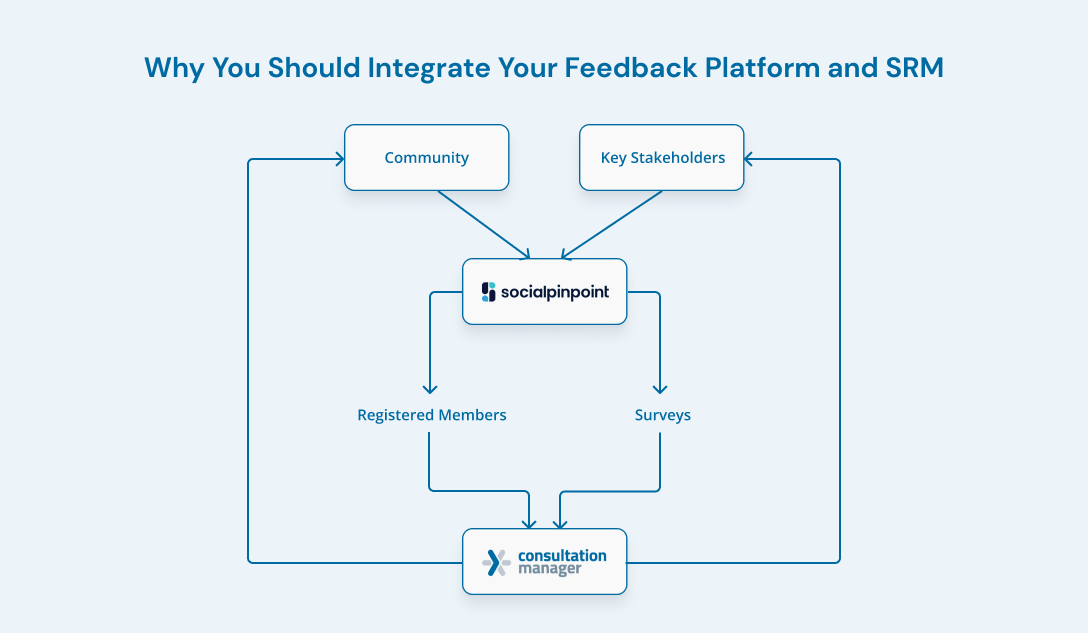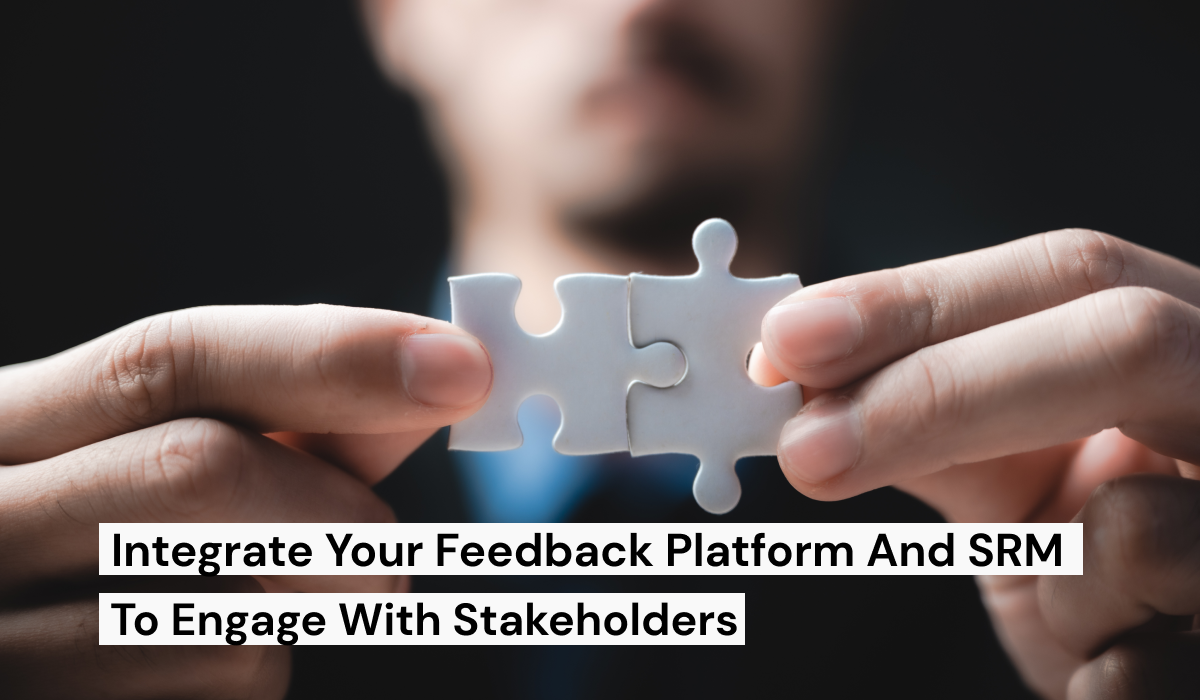When managing significant infrastructure approvals projects, effective project management and community engagement aren’t just a matter of convenience—they are a strategic move that can yield substantial benefits. There is now better integration between feedback platforms and your SRM (Stakeholder Relationship Management system) to help deepen your engagement with stakeholders.
In this article, we will explore why you should integrate your feedback platform and your SRM.

Four Reasons to Integrate Your Feedback Platform and SRM
Here are four reasons why you should integrate your feedback platform and your SRM to improve efficiency and deepen engagement with stakeholders:
- Building a Robust Engagement Framework
- Fostering a Responsive Environment
- Streamlining for Success
- Cultivating Community Ties
1. Building a Robust Engagement Framework
If you’re using stakeholder feedback tools such as Social Pinpoint, it’s now possible to channel this input directly into an SRM system. This enables the creation of a dynamic repository of both private stakeholder and public opinion that is rich in detail and easy to navigate. All your feedback can be classified into issues raised, sentiment, location and timing, providing a picture of how sentiment and the hierarchy of issues change over time and geography.
2. Fostering a Responsive Environment
The improved connection between feedback tools and SRM tools means that feedback isn’t just collected; it’s acted upon. This responsiveness signals to stakeholders that their input is valued, fostering a deeper level of trust and ongoing engagement. Responding to issues isn’t an optional matter during the approvals process, regulators expect that substantive issues are considered and that evidence of a meaningful response is provided. The connection of feedback tools and SRM help this happen more easily.
3. Streamlining for Success
Time is money. Efficiency is key for your approvals process. The combined power of your engagement platform and your SRM eliminates redundancies, automates workflows, and ensures that no stakeholder is overlooked. This streamlined approach not only saves time but also enhances the quality of interactions. Importantly, speed to action is improved, possibly cutting weeks from your program.
4. Cultivating Community Ties
At the heart of these tools is the ability to strengthen community bonds. By efficiently managing stakeholder data and interactions, project teams can tailor their outreach, building a more trusted relationship between stakeholders and project delivery, enhancing your brand.
In essence, the integration of your engagement platform and SRM is about creating a cohesive ecosystem that values each stakeholder’s contribution. The integration facilitates the ability to respond quickly with a detailed record of your interactions, which means you can show the work you have done when the time arises.
By integrating your feedback platform and SRM, you can streamline your operations, to make it more convenient for you to engage with your stakeholders through various channels. This is because by allowing for multiple communication methods, you can enable retargeting and fostering ongoing engagement. Integrating these systems can lead to a more cohesive approach to managing stakeholder feedback, fostering stronger relationships, and driving meaningful improvements in your organisation’s performance.

